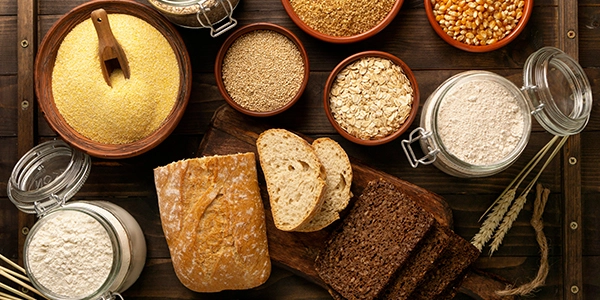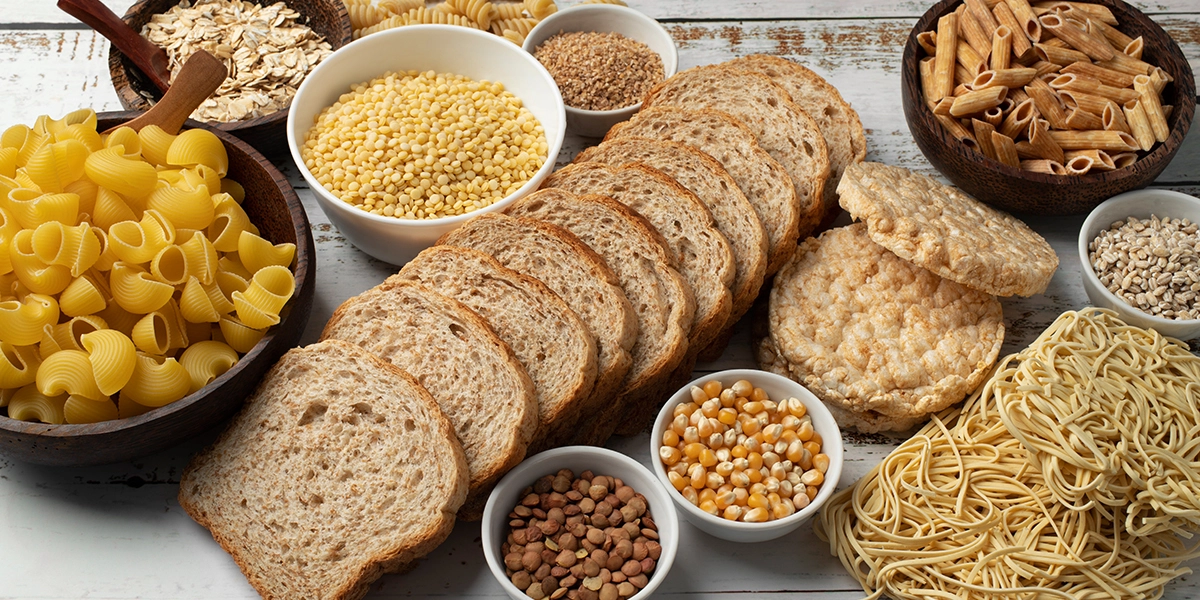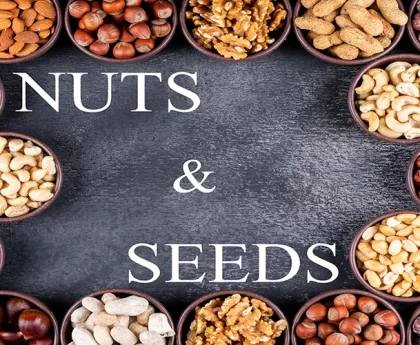Starchy Foods: also known as carbohydrates, are a category of foods that primarily consist of complex carbohydrates. These carbohydrates are composed of long chains of sugar molecules, which the body breaks down into glucose (a type of sugar) to use as an energy source. Starchy foods are an essential part of a balanced diet, as they provide a significant portion of the energy our bodies need to function properly.
Types of Starchy Food
There are various types of starchy foods that provide a good source of energy and are commonly consumed around the world.
Here are some of the main types:
- Grains:
– Rice (white rice, brown rice, wild rice, etc.)
– Wheat (bread, pasta, couscous, bulgur, etc.)
– Oats (oatmeal, oat bran, rolled oats, etc.)
– Barley
– Quinoa
– Corn (cornmeal, cornflour, tortillas, popcorn, etc.)
– Millet - Root Vegetables:
– Potatoes (white potatoes, sweet potatoes, yams, etc.)
– Cassava
– Taro
– Turnips
– Beets - Legumes:
– Beans (black beans, kidney beans, pinto beans, navy beans, etc.)
– Lentils
– Chickpeas
– Peas (green peas, split peas)
– Soybeans - Bread and Cereal Products:
– Bread (white bread, whole wheat bread, rye bread, etc.)
– Cereal (breakfast cereals, granola, etc.)
– Pasta (spaghetti, macaroni, etc.)
– Tortillas - Processed Starches:
– Cornstarch
– Tapioca starch
– Potato starch
– Rice flour
It’s important to note that while starchy foods provide energy, not all sources of starch are equally nutritious. Whole and minimally processed options are generally more beneficial because they retain more of their natural nutrients, including fiber, vitamins, and minerals. These nutrients contribute to overall health and can help regulate digestion and blood sugar levels.
When incorporating starchy foods into your diet, aim for a balanced intake of various types of carbohydrates along with other essential nutrients from vegetables, fruits, proteins, and healthy fats.
Nutrition of Starchy Food
Starchy foods are a significant source of carbohydrates, which are the body’s primary energy source. In addition to carbohydrates, starchy foods can also provide varying amounts of fiber, vitamins, minerals, and other nutrients. The nutritional content of starchy foods can vary based on the specific type of food and how it’s prepared.
Here’s a general overview of the nutritional components commonly found in starchy foods:
- Carbohydrates: Starchy foods are rich in carbohydrates, which are broken down into glucose during digestion and used for energy by the body. Carbohydrates are the primary macronutrient in starchy foods.
- Fiber: Some starchy foods, particularly whole grains, legumes, and certain vegetables, are also good sources of dietary fiber. Fiber is essential for digestive health, can help regulate blood sugar levels, and may contribute to a feeling of fullness.
- Vitamins: Starchy foods can provide various vitamins, including B vitamins (such as B1, B2, B6, and folate) that play roles in energy metabolism, nerve function, and cell division. Starchy vegetables like sweet potatoes also contain vitamin A, important for vision and immune function.
- Minerals: Starchy foods can contain minerals such as potassium, magnesium, and phosphorus. These minerals are crucial for maintaining healthy bodily functions, including nerve and muscle function, fluid balance, and bone health.
- Protein: While starchy foods are not typically high in protein compared to sources like meat or legumes, some starchy foods like legumes (beans, lentils, etc.) do provide a moderate amount of protein.
- Fats: Starchy foods are generally low in fats, but there are exceptions, such as certain preparations of potatoes (like french fries or chips) that are cooked in oil.
- Antioxidants: Some starchy foods, especially colorful ones like sweet potatoes, contain antioxidants that help protect cells from damage caused by harmful molecules called free radicals.
- Glycemic Index: Starchy foods also have a concept called the glycemic index (GI), which measures how quickly a carbohydrate-containing food raises blood sugar levels. Foods with a lower GI cause a slower, steadier rise in blood sugar, which can be beneficial for managing blood sugar levels.
When incorporating starchy foods into your diet, it’s important to consider portion sizes and opt for whole or minimally processed options whenever possible. Whole grains, legumes, and colorful vegetables tend to be more nutrient-dense and offer a wider range of health benefits compared to refined and processed sources of starch.
Benefits of Starchy Food
Starchy foods, when consumed as part of a balanced diet, offer several benefits due to their nutritional content and energy-providing properties.
Here are some of the benefits of including starchy foods in your diet:
- Energy Source: Starchy foods are a primary source of carbohydrates, which the body breaks down into glucose for energy. Carbohydrates provide fuel for physical activities, brain function, and overall bodily processes.
- Nutrient Diversity: Many starchy foods contain essential nutrients such as vitamins, minerals, and fiber. For example, whole grains are a good source of B vitamins, iron, and dietary fiber. Starchy vegetables like sweet potatoes are rich in vitamin A and other antioxidants.
- Digestive Health: Starchy foods like whole grains and legumes are often high in dietary fiber, which supports healthy digestion. Fiber adds bulk to stool, promotes regular bowel movements, and may help prevent constipation.
- Satiety: Fiber-rich starchy foods can contribute to a feeling of fullness and satiety, which can aid in weight management by helping to control appetite and reduce overeating.
- Steady Blood Sugar Levels: Foods with a lower glycemic index (GI), such as many whole grains and legumes, cause a slower and more gradual rise in blood sugar levels. This can help maintain steady energy levels and reduce the risk of sudden spikes and crashes in blood sugar.
- Heart Health: Whole grains, particularly those high in soluble fiber like oats and barley, have been associated with improved heart health by helping to lower LDL cholesterol levels and reduce the risk of heart disease.
- Weight Management: Including starchy foods in your diet can help you feel satisfied and prevent excessive snacking or overeating, which can contribute to weight management.
- Micronutrient Intake: Starchy foods, especially whole grains and certain vegetables, provide important vitamins and minerals that are essential for overall health and well-being.
- Plant–Based Protein: Some starchy foods like legumes (beans, lentils, peas) provide a moderate amount of protein, making them valuable sources of plant-based protein for individuals who may be vegetarian or vegan.
- Variety in the Diet: Starchy foods come in a wide range of options, allowing for dietary variety and creativity in meal planning.
It’s important to note that the benefits of starchy foods are maximized when they are consumed as part of a well-balanced diet that includes a variety of nutrient-rich foods. Moderation is key, as excessive consumption of refined and processed starchy foods may lead to weight gain and other health issues. Choosing whole and minimally processed sources of starch and combining them with vegetables, lean proteins, healthy fats, and fruits can contribute to optimal health and nutrition.

How do you know if a food is starchy?
You can generally identify whether a food is starchy by considering its source and characteristics. Starchy foods usually come from plant-based sources and are rich in complex carbohydrates.
Here are some guidelines to help you determine if a food is starchy:
- Source: Starchy foods are primarily derived from plants. Grains, legumes, and certain vegetables are common sources of starchy carbohydrates.
- Texture and Appearance: Many starchy foods have a characteristic texture and appearance. They may be dense, grainy, or have a higher carbohydrate content compared to foods that are mostly protein or fat. Starchy foods can also be softer when cooked due to the breakdown of starch.
- Cooking Methods: Starchy foods often change texture and become softer when cooked. For example, raw rice and raw pasta are hard and stiff, but they become soft and more palatable after cooking.
- Carbohydrate Content: Starchy foods are typically higher in carbohydrates than foods that are primarily protein or fat sources. If the carbohydrate content of a food is relatively high, it’s likely to be starchy.
Common examples of starchy foods include:
– Grains: Rice, wheat, oats, barley, quinoa, corn.
– Legumes: Beans, lentils, chickpeas, peas.
– Root Vegetables: Potatoes, sweet potatoes, yams, cassava, turnips.
– Bread and Cereal Products: Bread, pasta, cereal, rice cakes.
– Processed Starches: Cornstarch, potato starch, tapioca starch.
Remember that while starchy foods can provide essential nutrients and energy, it’s important to choose whole or minimally processed options whenever possible. Whole grains and minimally processed starchy foods tend to be more nutritious because they retain their fiber, vitamins, and minerals.
Is starch food good for you everyday?
Starchy foods can be a valuable part of a balanced diet when consumed in moderation and as part of a well-rounded nutritional plan. However, whether starchy foods are good for you every day depends on several factors, including your overall health goals, activity level, and the types of starchy foods you’re consuming.
Here are some considerations to keep in mind:
- Nutritional Variety: While starchy foods can provide energy and essential nutrients, it’s important to have a diverse diet that includes a variety of foods from different food groups. Relying solely on starchy foods for your daily nutrition may result in an imbalance of other essential nutrients.
- Complex Carbohydrates: Starchy foods are a primary source of complex carbohydrates, which provide energy for your body. Including them in your diet can help maintain steady blood sugar levels and provide sustained energy for physical and mental activities.
- Fiber Intake: Many starchy foods, especially whole grains and legumes, are rich in dietary fiber. Fiber supports digestive health, helps control appetite, and may contribute to weight management.
- Glycemic Index: Some starchy foods have a higher glycemic index (GI), causing a rapid rise in blood sugar levels. Opt for starchy foods with a lower GI to promote stable blood sugar levels.
- Portion Control: Like any type of food, portion control is essential. Eating starchy foods in appropriate portions prevents overconsumption of calories and helps maintain a healthy weight.
- Health Conditions: Individuals with certain health conditions, such as diabetes or insulin resistance, may need to be more mindful of their starchy carbohydrate intake to manage blood sugar levels effectively.
- Whole vs. Processed: Choose whole or minimally processed starchy foods whenever possible. Whole grains and minimally processed options retain more nutrients and fiber compared to highly refined products.
- Balanced Diet: Starchy foods should be part of a balanced diet that includes a variety of nutrient-rich foods, such as vegetables, fruits, lean proteins, healthy fats, and dairy or dairy alternatives.
It’s recommended to consult with a registered dietitian or healthcare professional to determine the right balance of starchy foods for your individual needs. They can help you create a personalized meal plan that aligns with your health goals and dietary preferences.
Junk Food Impacts Advantages Effects & More
World’s most Nutritious and Healthy foods
Read this Article Also:- Top 10 Fruits For Glowing Skin: The Secret of Vibrant Complexion
If you don’t like this article/post please share your feedback.





